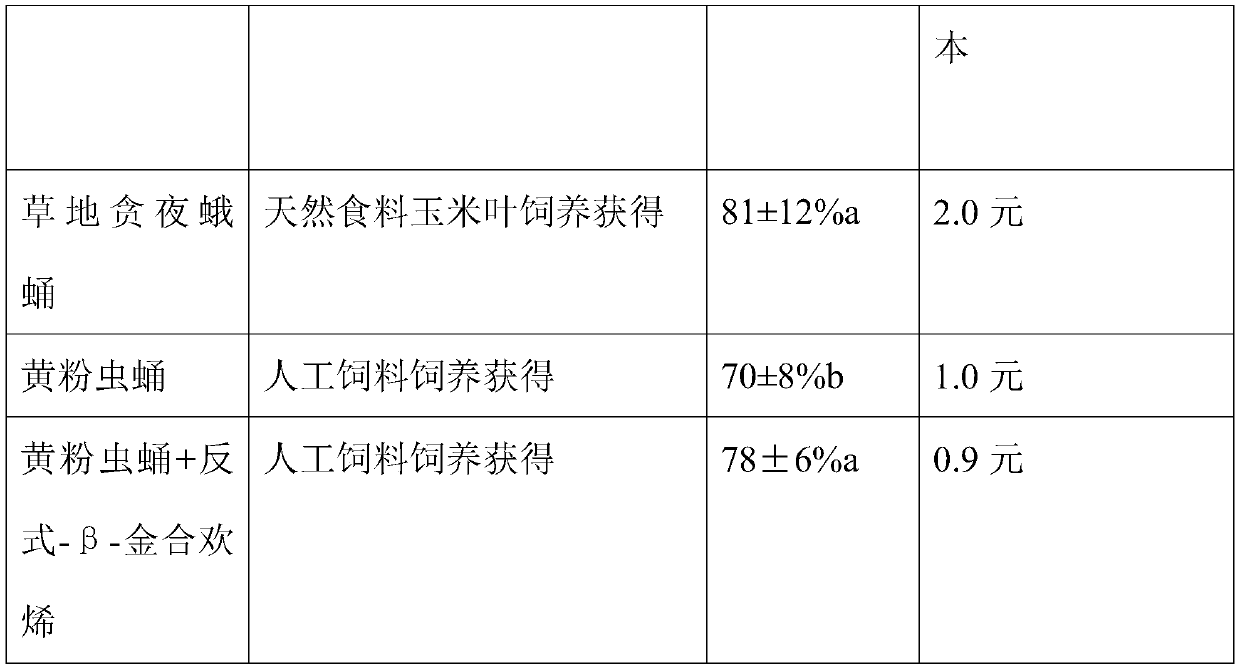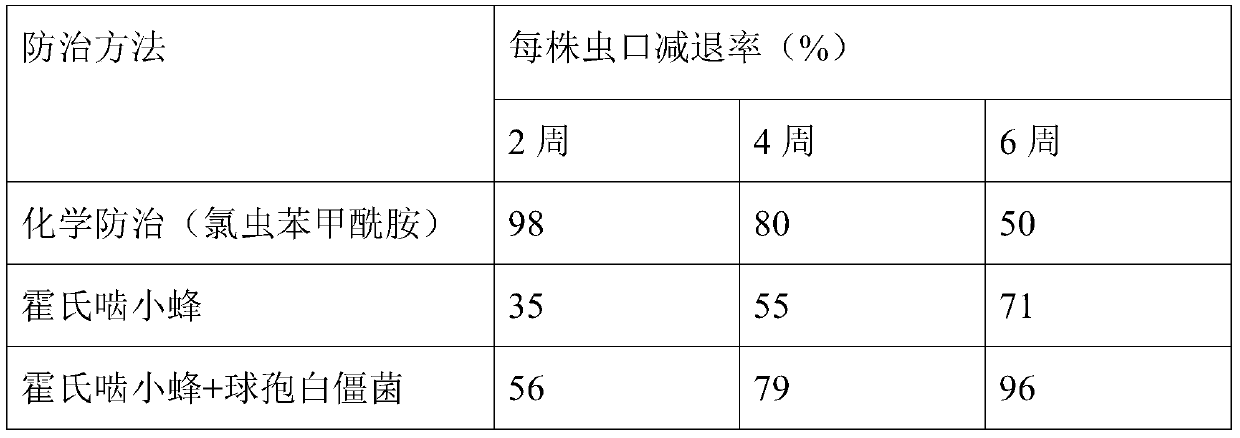Method for preventing and treating spodoptera frugiperda through tetrastichus howardi
A technology for Spodoptera frugiperda and Spodoptera frugiperda is applied in the field of biological control of agricultural pests and Spodoptera frugiperda. High cost and the effect of increasing the parasitic rate
- Summary
- Abstract
- Description
- Claims
- Application Information
AI Technical Summary
Problems solved by technology
Method used
Image
Examples
Embodiment 1
[0024] Example 1. Expansion of the natural enemy of Spodoptera frugiperda, H.
[0025] (1) The inventor found a parasitic wasp - Tetrastichushowardi Olliff (Tetrastichushowardi Olliff) in the area where Spodoptera frugiperda occurs. The parasitic wasp parasitizes the pupae of Spodoptera frugiperda and has strong fecundity. It finds a high-quality parasitic natural enemy for controlling Spodoptera frugiperda.
[0026] (2) The honeycomb room has the conditions of heat preservation, moisture retention, ventilation, light transmission, insect protection, and rodent protection, and is equipped with temperature, humidity, and lighting equipment. Keep the temperature at 24°C-28°C, relative humidity at 45%-65%, and light for 12 hours. The walls and floors of the beehives should be easy to clean and disinfect and should be kept clean and hygienic. Place the insect rearing box in the breeding room, and carry out disinfection and sterilization to the breeding room and the insect raisin...
Embodiment 2
[0034] Example 2. Preparation of Beauveria bassiana powder.
[0035] (1) The acquisition of Beauveria bassiana.
[0036] In the cornfield of Danzhou, Hainan, the dead pupae of Spodoptera frugiperda parasitized by Beauveria bassiana were found. The pathogen was isolated according to the conventional method, and it was identified as Beauveria bassiana, and then the isolate was tested for pathogenicity, and the highly pathogenic strain D-1 was screened out. A large amount of spore powder of Beauveria bassiana coccidioides D-1 was obtained by solid-state culture method.
[0037] (2) Beauveria bassiana powder.
[0038] Beauveria bassiana powder is a mixture of Beauveria bassiana spore powder, defatted corn flour, dextrin and soybean lecithin. Defatted cornmeal, which is harmless to parasitoids, was chosen as powder carrier; dextrin was used as binder; soybean lecithin was used as wetting agent. The mixing ratio is 16:2:1:1, and the effective content of Beauveria bassiana powder...
Embodiment 3
[0039] Example 3. Release of Bacteria chrysalis.
[0040] (1) Beauveria bassiana powder carried by H.
[0041] Spray coccidioides beauveria bassiana powder to the newly hatched wasps with a powder sprayer, every 500 spray powder 2g.
[0042] (2) Determination of the number of bees released
[0043] Through sampling survey, the field population of fall armyworm was estimated. The control effect is the best when the ratio of the released total amount of H. frugiperi to the estimated field population of Spodoptera frugiperda is 4:1.
[0044] (2) The method of releasing bees
[0045] The beauveria bassiana carrying Beauveria bassiana should be released in the field within 1-2 days. Released every 2 weeks for 3 consecutive releases. The reduction rate of insect population will reach more than 90%, and the crop yield will recover obviously. The wasp is like a biological missile, which can carry Beauveria bassiana to accurately find the pupae of Spodoptera frugiperda in the soil....
PUM
 Login to View More
Login to View More Abstract
Description
Claims
Application Information
 Login to View More
Login to View More - R&D
- Intellectual Property
- Life Sciences
- Materials
- Tech Scout
- Unparalleled Data Quality
- Higher Quality Content
- 60% Fewer Hallucinations
Browse by: Latest US Patents, China's latest patents, Technical Efficacy Thesaurus, Application Domain, Technology Topic, Popular Technical Reports.
© 2025 PatSnap. All rights reserved.Legal|Privacy policy|Modern Slavery Act Transparency Statement|Sitemap|About US| Contact US: help@patsnap.com



